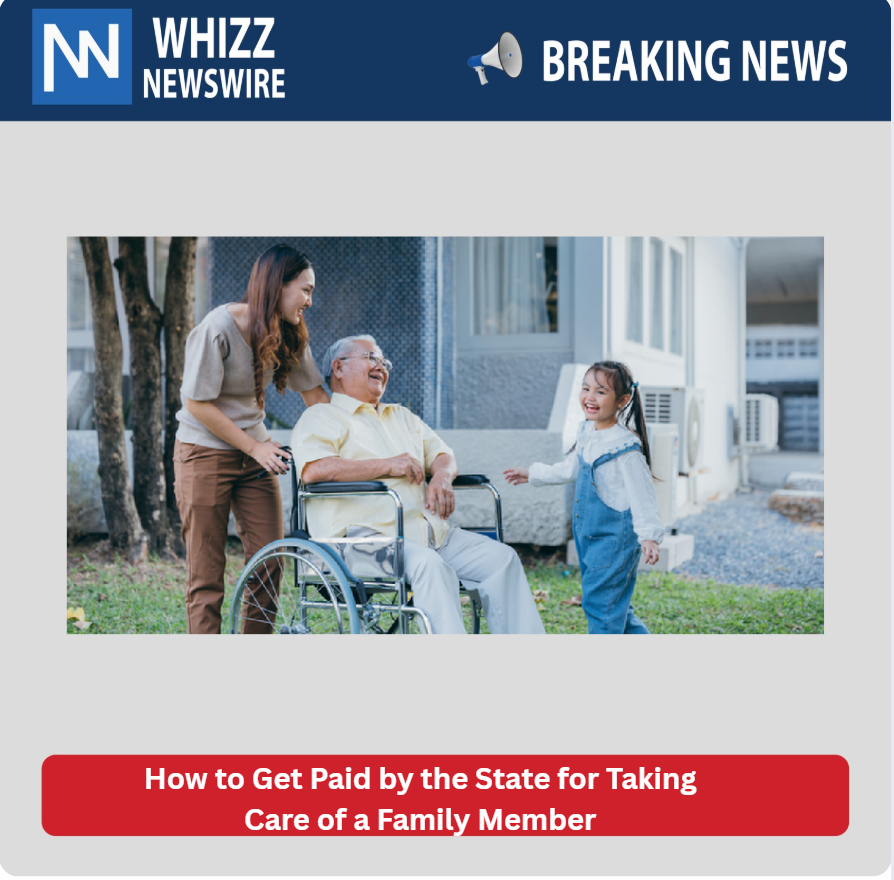A Complete Guide for Family Caregivers
Taking care of a loved one like an aging parent, a disabled child, or a chronically ill spouse can be emotionally rewarding, but it also comes with physical, emotional, and financial stress. Many caregivers don’t realize that they may be eligible to receive compensation from the state or government for the care they provide.
This guide explains how you can get paid for caregiving through state programs, Medicaid, veterans benefits, and more.
What Is a Family Caregiver?
A family caregiver is anyone who provides unpaid help to a family member who is elderly, disabled, or suffering from a chronic illness. This help often includes:
- Bathing, grooming, and dressing
- Cooking meals
- Cleaning and laundry
- Managing medications
- Driving to appointments
- Companionship and supervision
- Medical-related support (like using oxygen or feeding tubes)
More than 50 million Americans serve as unpaid caregivers and many don’t know that some government programs will pay them.
Step 1: Understand the Most Common Way to Get Paid – Medicaid
What is Medicaid?
Medicaid is a joint federal and state program that provides health coverage to low-income individuals, including seniors and people with disabilities. Some Medicaid programs allow family members to be paid for providing in-home care to a loved one.
Each state runs its own Medicaid program, so rules vary by state, but most offer options like:
Consumer-Directed Services (CDS) / Self-Directed Services
These programs allow the patient to hire and manage their own caregiver which can be a family member, including an adult child, grandchild, or sibling.
Here’s how it works:
- The person needing care enrolls in Medicaid and qualifies for a home care program.
- A caseworker assesses their needs.
- They can choose you (or another relative) to provide the care.
- You are paid an hourly wage through a government-approved fiscal agency.
Examples by State
| State | Program Name | Pays Family Members? | Notes |
| California | In-Home Supportive Services (IHSS) | Yes | Pays family caregivers, including for parents of disabled children |
| New York | Consumer Directed Personal Assistance Program (CDPAP) | Yes | Very flexible—can hire almost anyone except spouse |
| Texas | STAR+PLUS HCBS Waiver | Yes | Offers payment and training |
| Florida | Statewide Medicaid Managed Care LTC Program | Yes | May require training or certification |
| Pennsylvania | Community HealthChoices Waiver | Yes | Includes options for family caregivers |
You can check your state’s programs here:
Medicaid.gov Waivers
Step 2: Check If Your Loved One Qualifies
Before you can be paid as a caregiver, the person receiving care must be eligible.
Basic Requirements:
- They are enrolled in Medicaid
- They need help with activities of daily living (ADLs) such as bathing, eating, or moving
- They live at home, not in a nursing home
- They agree to participate in a self-directed care program
Usually, a nurse or social worker will visit the home to assess their needs and create a care plan.
Step 3: Enroll in a Program That Pays Family Caregivers
If your loved one qualifies for Medicaid and the right waiver, you can apply to be their paid caregiver.
What’s usually required:
- A background check
- Basic caregiver training (depends on state)
- Registering with a Fiscal Management Service (FMS) that handles payroll and taxes
- Submitting time sheets or logging your hours
The FMS or care agency will pay you like an employee, usually by direct deposit.
Step 4: Explore Other Government Programs That Pay Family Caregivers
1. Veterans Affairs (VA) Programs
If your family member is a veteran, the VA offers several programs that pay family caregivers:
- Aid and Attendance Pension: For veterans who need help with daily activities. Can be used to pay family caregivers.
- Program of Comprehensive Assistance for Family Caregivers (PCAFC): Pays caregivers of post-9/11 and post-1975 veterans with serious injuries.
- Monthly stipends + caregiver training + respite care included.
2. State-Based Programs (Non-Medicaid)
Some states offer caregiving support even if the person doesn’t qualify for Medicaid:
- Cash and Counseling Programs
- State-funded respite grants
- Area Agencies on Aging often help with family caregiver support and can guide you
You can search for your local Area Agency on Aging here:
Eldercare Locator
3. Long-Term Care Insurance
If your loved one purchased long-term care insurance, check the policy.
Some policies allow payments to family members for providing personal care at home.
4. Tax Deductions and Credits
While this is not direct payment, you may qualify for tax benefits:
- Dependent Care Credit
- Deducting medical expenses
- Claiming your family member as a dependent on your taxes
Consult with a tax advisor to maximize your options.
Other Options to Get Paid for Caregiving
| Option | Who It Helps | Pays? |
| Paid family leave from employer | Working caregivers | Yes (temporary) |
| Local nonprofit grants | Low-income families | Sometimes |
| Becoming a certified caregiver | Anyone | Opens job options |
| Hiring through a care agency | Anyone | Can be hired by agencies |
Important Notes
- Spouses are not always eligible to be paid (depends on the program).
- Some programs exclude parents of minor children.
- Hourly wages vary by state, but often range from $10 to $20/hour.
- Some programs offer respite care, so you can get a break.
Final Thoughts
Getting paid by the state for caring for a loved one is absolutely possible—but it takes research, paperwork, and following the rules.
Here’s what you should remember:
- Check Medicaid eligibility for your loved one
- Enroll in a state or VA program that pays family caregivers
- Get trained or registered if required
- Track your time and get paid like an employee
Being a caregiver is hard, but you don’t have to do it alone and you shouldn’t have to do it unpaid.




